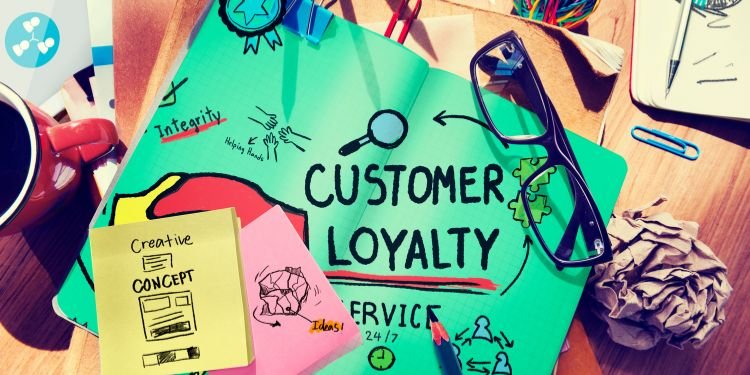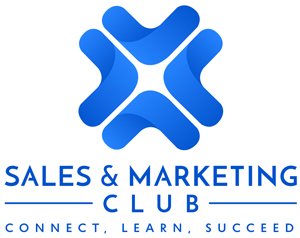“The aim of marketing is to know and understand the customer so well the product or service fits him and sells itself.” – Peter Drucker
Introduction
In today’s highly competitive marketplace, the challenge of turning leads into loyal customers is more significant than ever. The process goes beyond merely closing a sale; it involves cultivating lasting relationships that lead to repeat business and enthusiastic referrals. Loyal customers are invaluable assets—they generate steady revenue and actively contribute to your brand’s growth by endorsing it to others. This comprehensive guide delves into the most effective strategies for transforming leads into devoted customers, ensuring your business’s long-term success and sustainability.
Understanding Your Customer
Know Your Audience
To effectively convert leads into loyal customers, you must first understand who your audience is. This requires gathering and analyzing data to uncover their preferences, behaviors, and pain points. Creating detailed buyer personas—fictional, generalized representations of your ideal customers—can help in tailoring your marketing strategies. By grasping their needs and desires, you can craft more relevant marketing messages that resonate deeply with them. For instance, if your data shows that your target audience values eco-friendly products, highlighting your sustainable practices in your marketing can make your message more compelling and relevant, enhancing your chances of conversion and loyalty.
Customer Segmentation
Customer segmentation involves dividing your market into distinct groups based on shared characteristics like demographics, behaviors, or needs. This approach allows for more targeted and effective marketing efforts. By addressing specific segments with tailored messages and offers, you can engage leads more meaningfully. For example, a company selling fitness equipment might segment its audience by activity level, creating distinct campaigns for beginners versus seasoned athletes. This targeted approach ensures that your marketing efforts are more aligned with the specific needs and preferences of each segment, increasing the likelihood of converting leads into loyal customers.
Building Trust and Credibility
Provide Value
Offering genuine value is crucial in building customer loyalty. Value extends beyond the core functionality of your product or service; it encompasses the overall customer experience, including support and additional benefits. For example, if you provide exceptional customer service, insightful content, or value-added features, customers are more likely to view your brand as indispensable. Ensuring that every interaction provides value can significantly enhance customer satisfaction and loyalty. Consider creating educational content or offering personalized recommendations that address your customers’ needs, thereby demonstrating your commitment to their success and enhancing their overall experience with your brand.
Transparency and Honesty
Transparency and honesty are foundational to building trust with your customers. This means being upfront about pricing, acknowledging and correcting mistakes, and providing accurate information. Trust is essential for customer loyalty, and maintaining it requires consistent honesty in all interactions. For instance, if there is a delay in product delivery, promptly informing customers and offering compensatory benefits can help in maintaining their trust. Being transparent about your business practices and openly communicating any issues helps build a solid foundation of trust, which is critical for fostering long-term customer loyalty.
Effective Communication
Personalized Communication
Personalized communication can significantly enhance customer engagement. Utilize data and analytics to understand individual customer preferences and tailor your communications accordingly. Personalized messages, such as emails addressing customers by their names or offering product recommendations based on past purchases, can make customers feel valued and understood. For example, a personalized email offering a discount on a product similar to a previous purchase can show customers that you are attentive to their preferences, increasing the likelihood of conversion and fostering loyalty.
Multi-Channel Engagement
Engaging with customers across multiple channels—such as social media, email, and in-person interactions—ensures that you are accessible and responsive. A multi-channel approach enhances the customer experience by providing various touchpoints for interaction. For instance, a customer might initially discover your brand through social media but prefer to make a purchase via email. By maintaining a consistent and seamless experience across all channels, you reinforce your brand’s reliability and commitment to customer satisfaction, which contributes to building long-term loyalty.
Providing Excellent Customer Service
Responsive Support
Responsive and efficient customer support is crucial for retaining customers. Ensure that your support team is well-trained to handle inquiries and resolve issues promptly. Quick and effective problem resolution not only addresses customer concerns but also demonstrates your commitment to their satisfaction. For example, implementing a responsive live chat feature on your website can provide instant assistance and enhance the overall customer experience. Providing multiple support channels, such as phone, email, and social media, can further improve accessibility and customer satisfaction.
Feedback Mechanism
Implementing a robust feedback mechanism allows customers to voice their opinions and concerns. Actively seeking and addressing feedback shows that you value customer input and are committed to continuous improvement. For example, conducting regular surveys or monitoring online reviews can provide insights into customer experiences and areas for enhancement. By acting on feedback and making necessary adjustments, you not only improve your products and services but also build a stronger relationship with your customers, demonstrating that their opinions matter.
Leveraging Technology
CRM Systems
Customer Relationship Management (CRM) systems are invaluable tools for managing customer interactions and data. A well-implemented CRM system can enhance customer service, enable personalized communication, and streamline follow-up processes. For example, a CRM can track customer behavior, preferences, and past interactions, allowing you to tailor your marketing efforts and improve customer support. By leveraging CRM data, you can create targeted campaigns, offer personalized recommendations, and provide timely follow-ups, all of which contribute to building customer loyalty.
Automation
Automation tools can streamline various marketing and customer service processes, improving efficiency and consistency. Automated email campaigns, chatbots, and other tools can help maintain regular communication with customers, ensuring they receive timely updates and support. For example, automated email sequences for abandoned cart reminders or post-purchase follow-ups can enhance engagement and drive conversions. By automating routine tasks, you can focus on more strategic initiatives while ensuring a consistent and positive experience for your customers.
Creating a Loyalty Program
Reward Systems
Implementing a loyalty program can significantly enhance customer retention. Reward systems that offer points, discounts, or exclusive benefits for repeat purchases and engagement encourage customers to continue doing business with you. For example, a points-based rewards program that allows customers to redeem points for discounts or special offers can incentivize repeat purchases. A well-designed loyalty program not only recognizes and rewards customer loyalty but also provides valuable insights into customer preferences and behaviour, helping you refine your marketing strategies.
Gamification
Incorporating gamification elements into your loyalty program can make it more engaging and motivating. Features such as challenges, leaderboards, and rewards add an element of fun and competition, encouraging customers to actively participate. For example, creating a leaderboard that tracks customer progress and offers rewards for top performers can drive increased engagement and loyalty. Gamification adds a dynamic and interactive component to your loyalty program, making it more appealing and fostering a stronger connection with your brand.
Consistent Quality
Product/Service Quality
Maintaining consistent quality in your products or services is fundamental to customer retention. Regularly assess and improve your offerings to ensure they meet or exceed customer expectations. Consistency in quality builds trust and reliability, essential for fostering long-term loyalty. For example, conducting regular quality checks and addressing any issues promptly can help maintain high standards. By delivering reliable and high-quality products or services, you reinforce your brand’s reputation and encourage repeat business.
Continuous Improvement
Adopting a mindset of continuous improvement is crucial for staying competitive and meeting evolving customer needs. Regularly seek feedback and use it to enhance your products, services, and customer experience. For example, implementing a process for gathering and analyzing customer feedback can provide valuable insights into areas for improvement. By demonstrating a commitment to ongoing enhancement and innovation, you reassure customers that you are dedicated to providing the best possible experience, thereby strengthening their loyalty.
Building a Community
Social Media Engagement
Utilize social media to build a community around your brand. Engage with your audience through regular posts, interactive content, and responsive interactions. A strong social media presence allows you to connect with customers on a more personal level and foster a sense of belonging. For example, hosting live Q&A sessions or sharing user-generated content can enhance engagement and create a vibrant brand community. By actively participating in social media conversations and encouraging customer interactions, you build stronger relationships and cultivate brand loyalty.
User-Generated Content
Encouraging customers to create and share content related to your brand can provide authentic promotion and strengthen the sense of community. User-generated content, such as reviews, testimonials, or social media posts, offers genuine endorsements and fosters a sense of belonging among customers. For example, featuring customer stories or images on your website or social media channels can build trust and credibility. By highlighting customer experiences, you not only promote your brand but also make customers feel valued and connected to your brand.
Providing Educational Content
Blogs and Articles
Creating informative blogs and articles that address customer pain points and interests can position your brand as a thought leader. Educational content provides value and helps attract leads who are seeking solutions to their problems. For example, writing blog posts that offer practical tips, industry insights, or how-to guides can establish your expertise and build trust with your audience. By consistently delivering valuable content, you enhance customer satisfaction and increase the likelihood of converting leads into loyal customers.
Webinars and Tutorials
Hosting webinars and tutorials can provide an interactive and engaging way to educate your customers about your products, industry trends, or best practices. For example, offering a webinar on how to use your products more effectively or a tutorial on industry-related topics can enhance customer knowledge and satisfaction. By providing valuable and relevant content, you demonstrate your commitment to helping customers succeed, fostering loyalty and encouraging continued engagement with your brand.
Personalization
Tailored Offers
Personalizing your offers based on customer behaviour and preferences can enhance their experience and loyalty. Tailored discounts, product recommendations, and exclusive deals show customers that you understand their unique needs and are willing to cater to them. For example, sending a personalized discount offer based on a customer’s previous purchases can make them feel valued and incentivize repeat business. By using data to create customized offers, you improve the relevance and appeal of your promotions, fostering stronger customer relationships.
Dynamic Content
Utilize dynamic content on your website and in your emails to provide a personalized experience. Show different content to different segments based on their preferences and behavior. For example, displaying personalized product recommendations on your website based on a customer’s browsing history can enhance their shopping experience. Dynamic content allows you to deliver more relevant and engaging experiences, increasing customer satisfaction and loyalty by addressing individual needs and interests.
Strong Brand Identity
Consistent Branding
Maintaining a consistent brand identity across all touchpoints is essential for building and reinforcing customer loyalty. This includes having a cohesive visual identity, tone of voice, and messaging across your website, social media, and marketing materials. For example, ensuring that your logo, color scheme, and brand messaging are uniform across all platforms helps create a strong and recognizable brand presence. Consistent branding builds trust and recognition, making it easier for customers to connect with and remember your brand, which in turn supports long-term loyalty.
Conclusion
Turning leads into loyal customers is a multifaceted process that requires a deep understanding of your audience, effective communication, and a commitment to providing value and exceptional service. By employing strategies such as personalized communication, leveraging technology, and building a strong brand identity, businesses can foster lasting relationships with their customers. Ultimately, creating a positive and consistent customer experience will not only drive conversions but also encourage loyalty and advocacy, setting the foundation for long-term success.


















